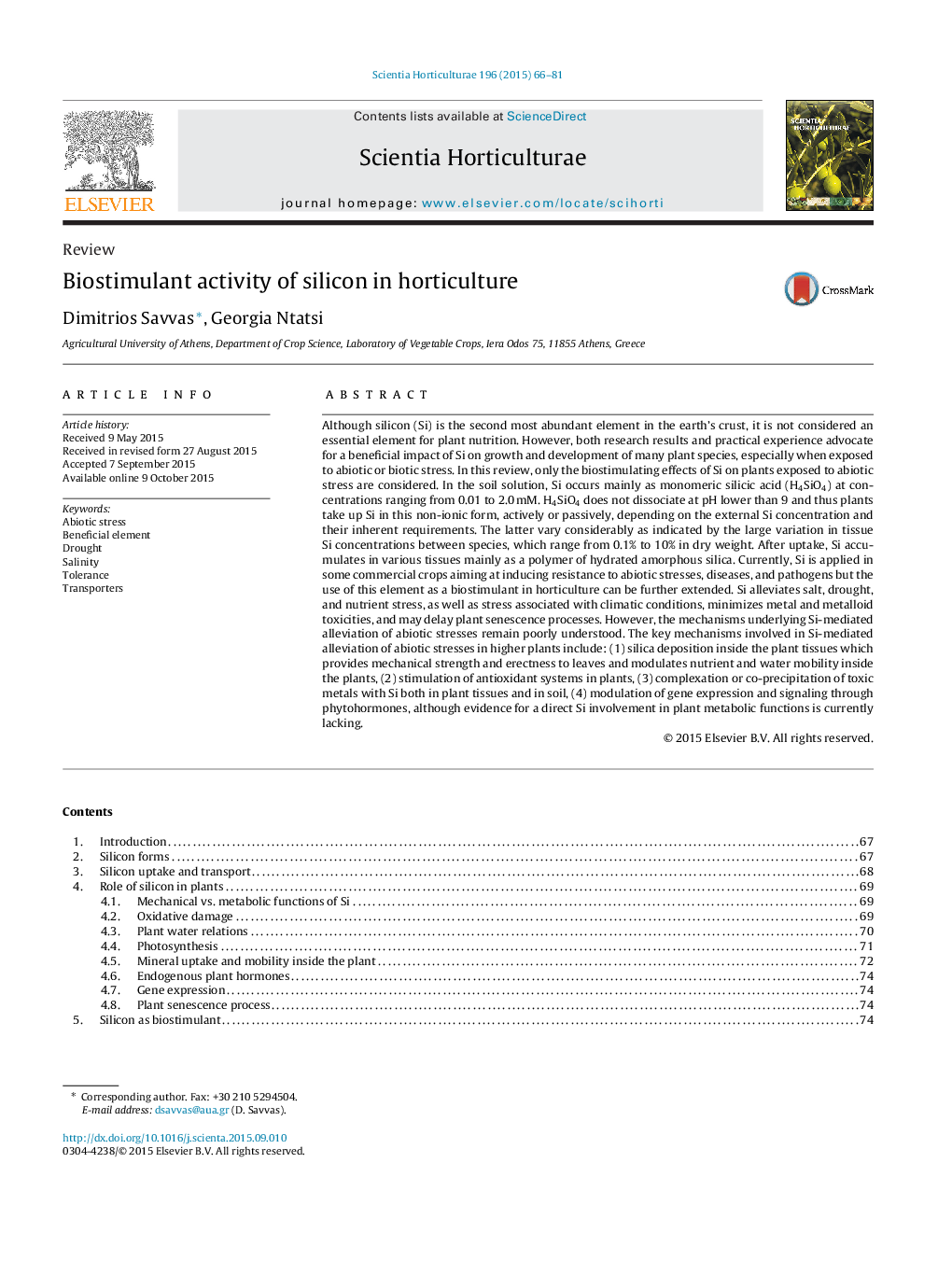| کد مقاله | کد نشریه | سال انتشار | مقاله انگلیسی | نسخه تمام متن |
|---|---|---|---|---|
| 6406474 | 1628802 | 2015 | 16 صفحه PDF | دانلود رایگان |
- Si improves growth and development of horticultural crops exposed to abiotic stress.
- Si acts on oxidative damage, water relations, photosynthesis, ion uptake, hormones.
- Si acts mainly through silica deposition in tissues providing mechanical strength.
- Si is applied to plants via foliar spraying, incorporation to soil, or fertigation.
Although silicon (Si) is the second most abundant element in the earth's crust, it is not considered an essential element for plant nutrition. However, both research results and practical experience advocate for a beneficial impact of Si on growth and development of many plant species, especially when exposed to abiotic or biotic stress. In this review, only the biostimulating effects of Si on plants exposed to abiotic stress are considered. In the soil solution, Si occurs mainly as monomeric silicic acid (H4SiO4) at concentrations ranging from 0.01 to 2.0Â mM. H4SiO4 does not dissociate at pH lower than 9 and thus plants take up Si in this non-ionic form, actively or passively, depending on the external Si concentration and their inherent requirements. The latter vary considerably as indicated by the large variation in tissue Si concentrations between species, which range from 0.1% to 10% in dry weight. After uptake, Si accumulates in various tissues mainly as a polymer of hydrated amorphous silica. Currently, Si is applied in some commercial crops aiming at inducing resistance to abiotic stresses, diseases, and pathogens but the use of this element as a biostimulant in horticulture can be further extended. Si alleviates salt, drought, and nutrient stress, as well as stress associated with climatic conditions, minimizes metal and metalloid toxicities, and may delay plant senescence processes. However, the mechanisms underlying Si-mediated alleviation of abiotic stresses remain poorly understood. The key mechanisms involved in Si-mediated alleviation of abiotic stresses in higher plants include: (1) silica deposition inside the plant tissues which provides mechanical strength and erectness to leaves and modulates nutrient and water mobility inside the plants, (2) stimulation of antioxidant systems in plants, (3) complexation or co-precipitation of toxic metals with Si both in plant tissues and in soil, (4) modulation of gene expression and signaling through phytohormones, although evidence for a direct Si involvement in plant metabolic functions is currently lacking.
Journal: Scientia Horticulturae - Volume 196, 30 November 2015, Pages 66-81
